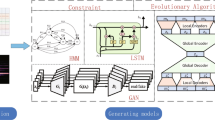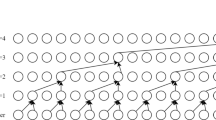Abstract
“MUSIC is the divine way of portraying the most beautiful about this world”. With that being said, the diversity in this language of music is immense, to say the least. Broadly, one would be well aware of the classification between Indian classical music and western music. In music Information Retrieval (MIR), raga classification has a tremendous role in understanding the fundamentals of Indian classical music and in a multitude of other tasks like database organisation of music files to music recommendation systems. The paper incorporates a variety of techniques like ANN, CNN, Bi LSTM and XGBoost models for the task of Raga Identification from a Carnatic Classical Instrumental audio (CCIA). The work is initially carried out on a set of 10 ragas and then extended to largely available 15 ragas of the dataset. The data samples for the same were obtained from the standard data set. This task showed state-of-the-art results with an accuracy of 97% for a set of 15 Ragas. The astounding results were obtained without performing source separation on the musical audio track. The process was carried out on the Ragas pertaining to Carnatic Classical music, a division of Indian classical music.
















Similar content being viewed by others
Change history
28 September 2023
A Correction to this paper has been published: https://doi.org/10.1007/s42979-023-02168-3
Reference
Madhusudhan ST, Chowdhary G. Deepsgrm. Sequence classification and ranking in Indian CLASSICAL music with deep learning. University of Illinois. Proceedings of the 20th ISMIR Conference, Delft, Netherlands, November 4–8, 2019.
Sharma H, Bali RS. Comparison of ML classifiers for Raga recognition. Chandigarh University. Int J Sci Res Publ, 2015; 5(10).
Pandey G, Mishra C, Ipe P. Tansen: A system for automatic raga identification. Proc. of Indian International Conference on Artificial Intelligence. 2003; 1350–1363.
Chordia P, Rae A. Raag recognition using Pitch-class and pitch-class dyad distributions. Proc. of ISMIR. 2007; 431–436.
Madhusdhan ST, Chowdhary G. Tonic independent raag classification in Indian classical music. 2018
Shetty S, Achary K. Raga mining of Indian music by extracting arohana-avarohana pattern. Int J Recent Trends Eng. 2009;1(1):362.
Gulati S, Serrà Julià J, Ganguli KK, Sentürk S, Serra X. Time-delayed melody surfaces for raga recognition. In International Society for Music Information Retrieval Conference. 2016.
Dutta S, Murthy HA. Raga verification in carnatic music using the longest common segment set. In International Society for Music Information Retrieval Conference. 2015; 1: 605–611.
Sridhar R, Geetha TV. Raga identification of carnatic music for music information retrieval. Int J Recent Trends Eng. 2009;1(1):571.
Gulati S, Serrà J, Ishwar V, Sentürk S, Serra X. Phrase-based rĀga recognition using vector space modeling. 2016 IEEE International Conference on Acoustics, Speech and Signal Processing (ICASSP), Shanghai. 2016; pp. 66–70. https://doi.org/10.1109/ICASSP.2016.7471638.
Gulati S, Serrà J, Ganguli KK, Sentürk S, Serra X. Time-delayed melody surfaces for raga recognition. In Proceedings of the 17th International Society for Music Information Retrieval Conference (ISMIR). New York, USA. 2016; pp. 751–757.
Ashwini, Krishna AV. Feature selection for Indian instrument recognition using SVM classifier. 2020 International Conference on Intelligent Engineering and Management (ICIEM). London, United Kingdom. 2020; pp. 277–280. https://doi.org/10.1109/ICIEM48762.2020.9160223.
Chandan SV, Naik MR, Ashwini, Krishna AV. Indian Instrument Identification from Polyphonic Audio using KNN Classifier. 2019 International Conference on Wireless Communications Signal Processing and Networking (WiSPNET), Chennai, India, 2019; pp. 135–139. https://doi.org/10.1109/WiSPNET45539.2019.9032860.
Muller M, Ellis DPW, Klapuri A, Richard G. Signal processing for music analysis. IEEE J Sel Top Signal Process. 2011;5(6):1088–110.
Kurth F, Muller M. Efficient index-based audio matching. IEEE Trans Audio Speech Lang Process. 2008;16(2):382–95.
Muller M, Ewert S. Chroma Toolbox: MATLAB implementations for extracting variants of chroma-based audio features. In Proceedings of the 12th International Conference on Music Information Retrieval (ISMIR). Miami, USA, 2011; pp. 215–220.
Serra J, Gomez E, Herrera P, Serra X. Chroma binary similarity and local alignment applied to cover song identification. IEEE Trans Audio Speech Lang Process. 2008;16:1138–51.
Muller M. Information Retrieval for Music and Motion. Springer Verlag; 2007.
Author information
Authors and Affiliations
Corresponding author
Additional information
Publisher's Note
Springer Nature remains neutral with regard to jurisdictional claims in published maps and institutional affiliations.
“This article is part of the topical collection “Computational Statistics” guest edited by Anish Gupta, Mike Hinchey, Vincenzo Puri, Zeev Zalevsky and Wan Abdul Rahim”.
Rights and permissions
Springer Nature or its licensor (e.g. a society or other partner) holds exclusive rights to this article under a publishing agreement with the author(s) or other rightsholder(s); author self-archiving of the accepted manuscript version of this article is solely governed by the terms of such publishing agreement and applicable law.
About this article
Cite this article
Bhat, A., Krishna, A.V. & Acharya, S. Analytical Comparison of Classification Models for Raga Identification in Carnatic Classical Instrumental Polyphonic Audio. SN COMPUT. SCI. 1, 339 (2020). https://doi.org/10.1007/s42979-020-00355-0
Received:
Accepted:
Published:
DOI: https://doi.org/10.1007/s42979-020-00355-0




